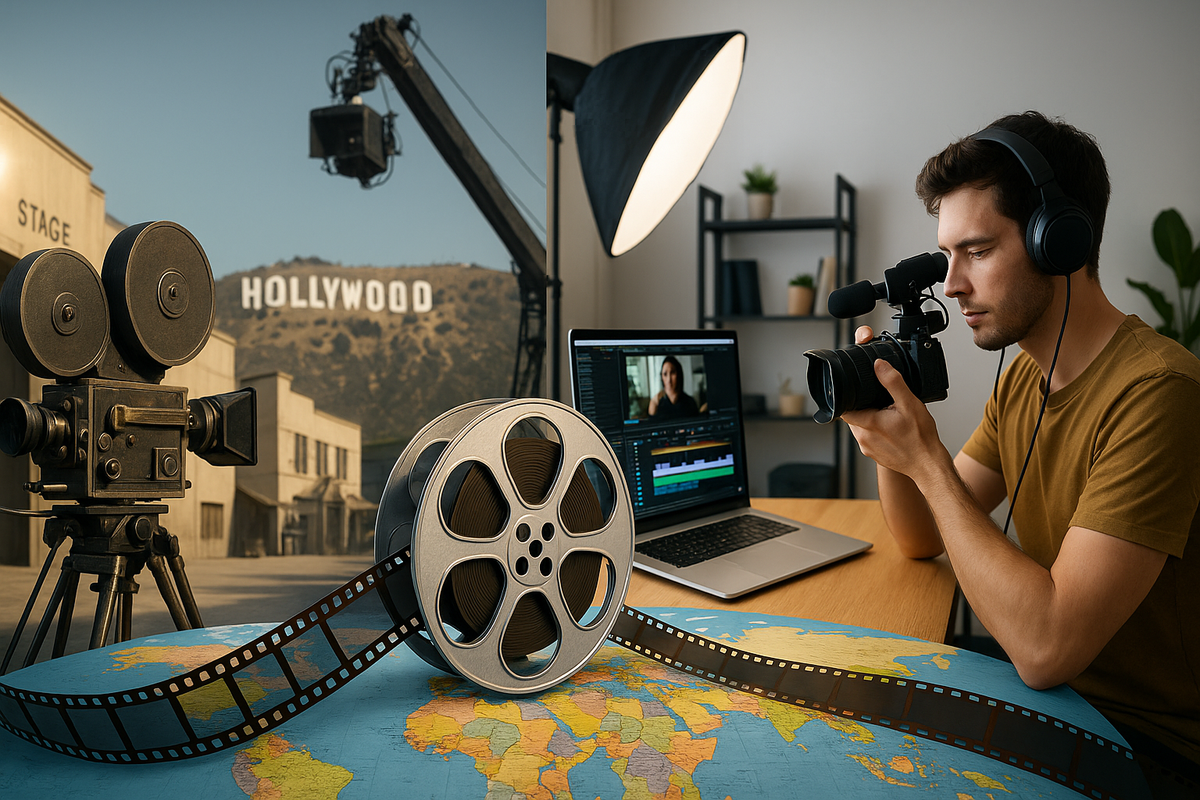
By Chris Sturges | WBN News | May 20, 2025
The U.S. film industry, long seen as the global epicenter of storytelling and spectacle, is at a pivotal moment. With the rapid rise of streaming, the aftershocks of the COVID-19 pandemic, labor disruptions, AI anxiety, and increased global competition, American filmmaking is being redefined — not just by what gets made, but by where, how, and why it's made. Social Media is rife with stories of empty parking lots and dormant studios, not just in California, but in previously busy film states like Georgia, Texas, and Hawaii.
📉 Shrinking Budgets and Shifting Economics
Gone are the days when Hollywood operated on a two-tier economy of $200 million blockbusters and scrappy indies. Mid-budget films, long considered commercially risky, are seeing a resurgence — but under tight constraints. Studios are becoming increasingly selective, with streaming giants like Netflix, Amazon, and Disney+ cutting back on content spending in favor of profitability.
Even Marvel Studios — once the gold standard for box office success — has felt the squeeze. After the underperformance of Ant-Man and the Wasp: Quantumania and The Marvels, Disney announced plans to scale back its output and focus on quality over quantity.
Meanwhile, successful lower-budget films like Everything Everywhere All at Once (A24) and Talk to Me (Sundance hit turned box office success) prove that audience appetite still exists for bold, original storytelling — especially when driven by vision rather than IP.
📺 Streaming vs. Theatrical: The Hybrid Future
The question is no longer "streaming or theaters?" but rather, "How do they coexist?" Theaters have begun to rebound post-pandemic, with films like Barbie and Oppenheimer (together dubbed “Barbenheimer”) revitalizing the box office with their combined $2 billion in global revenue.
However, streaming is far from fading. Amazon recently committed to releasing more of its titles theatrically before moving them to Prime Video, while Netflix continues to experiment with limited theatrical runs for prestige titles like Glass Onion and The Killer.
What’s emerging is a hybrid model: event cinema and premium formats (IMAX, Dolby) for blockbusters and awards contenders, while smaller films build audience momentum on streaming platforms. Cinemas are already pivoting away from relying solely on films to fill their venues and sell their popcorn.
🎭 Labor and AI: A Contentious Frontier
The 2023 Writers Guild of America (WGA) and SAG-AFTRA strikes marked a turning point. At the center of both disputes: fair compensation in the streaming era and the looming role of artificial intelligence. Writers demanded — and won — protections against the use of AI-generated scripts. Actors sought similar safeguards for their digital likenesses.
The strikes, which halted nearly all scripted production for months, exposed deep tensions between creative labor and the tech-driven economics of modern media. While temporary agreements have been reached, long-term questions remain: Who owns performance data? What does “residual income” look like in a world without reruns?
🎥 Location, Location, Legislation
States like Georgia and New Mexico have aggressively expanded tax incentives to attract production, resulting in major shifts, but even those have not turned the tide. Georgia alone hosted more than 300 productions in 2023, including Stranger Things and several Marvel titles, but today it's quiet. Meanwhile, California is fighting back with a revitalized $330 million annual film tax credit program and investments in sustainable studio infrastructure, hoping it will give them enough life to pivot.
Still, high costs, labor regulations, and infrastructure strain are pushing some productions overseas — to the UK, Canada, Eastern Europe, and, increasingly, Mexico.
🌎 Diversity, Representation, and Globalization
Diversity and inclusion efforts remain top priorities in the U.S. film industry, though progress is uneven. The success of films like Black Panther: Wakanda Forever, Past Lives, and Minari demonstrates that representation resonates — creatively and commercially.
Simultaneously, U.S. studios are forging more international co-productions. Netflix’s recent $1 billion investment in Mexico, and A24’s continued partnerships with Asian filmmakers, signal an acknowledgment that storytelling must increasingly transcend borders.
🎬 The Road Ahead: Innovation Meets Identity
Filmmaking in the U.S. is at a crossroads — not because it's collapsing, but because it's evolving. The tools are more powerful, the platforms more diverse, and the audience more global than ever before. But with that opportunity comes a challenge: how to preserve creative integrity, ensure fair compensation, and adapt to a fragmented, fast-moving media landscape.
As the next wave of filmmakers rises — many from nontraditional backgrounds, producing on phones or in virtual stages — the question becomes: Can the U.S. film industry remain not just a commercial powerhouse, but a cultural one?
The answer, as always, will be written in the stories we choose to tell — and how we choose to tell them.
Chris Sturges, Business Development Director for
Suspiciously Convenient Productions Inc
Contact: chris@suspiciouslyconvenient.com
Tags: #US Film Industry #Hollywood Trends #Streaming Vs Theatrical
#Filmmaking Future #American Cinema #Film Industry 2025



